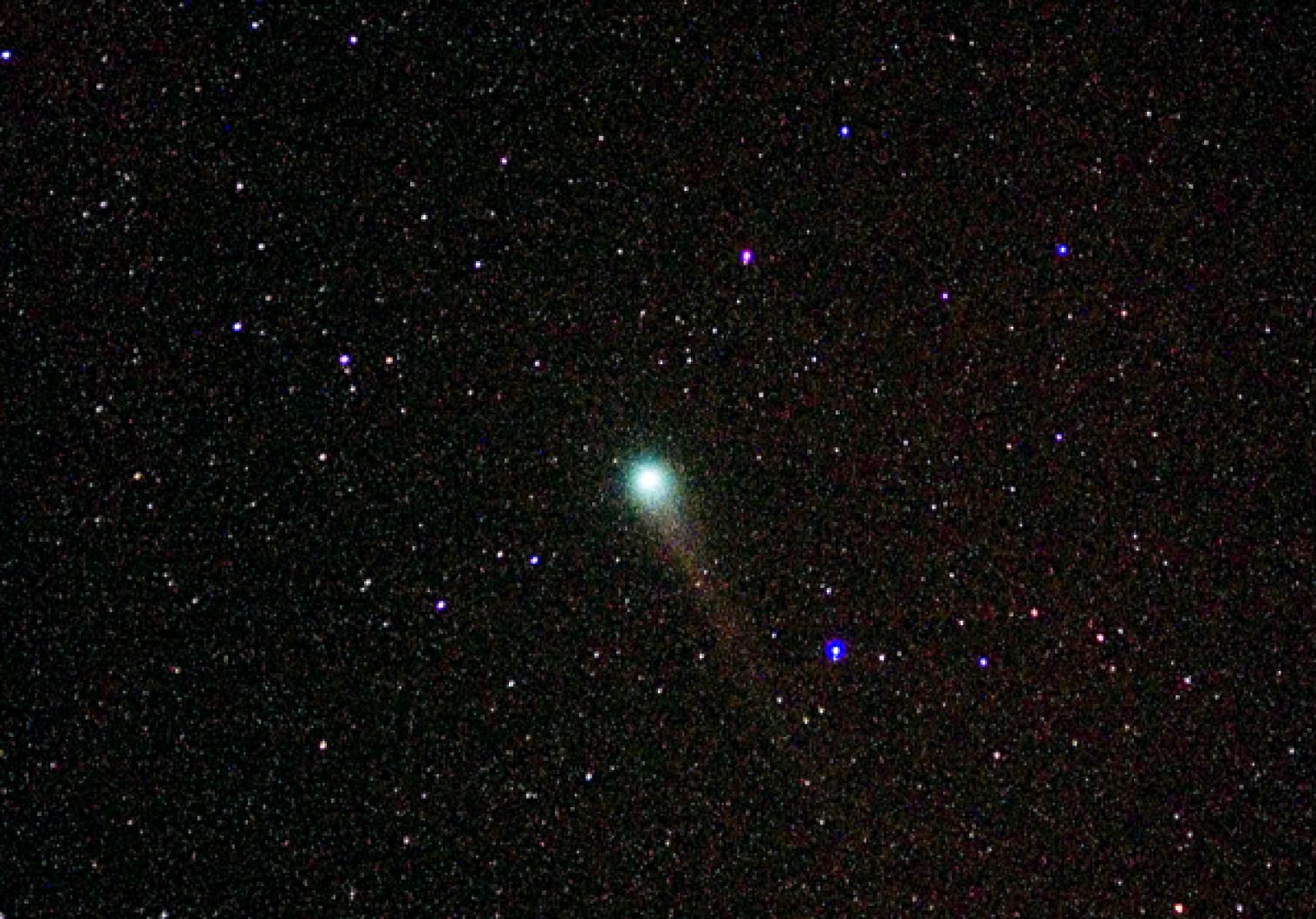A new visitor to our solar system is high in Vineyard skies this week. Comet Lulin, despite being barely visible to those with even the keenest vision, has gained attention around the world.
Twelve years ago, Comet Hale-Bopp was the last newly discovered comet that anyone could see overhead. That comet was considerably brighter and easier to spot than our new visitor. In photographs, Comet Lulin has a distinct greenish color, while Hale-Bopp shone both white and blue.
For those with a pair of binoculars, the comet appears as a fuzzy dust ball under the zodiacal constellation Leo. It is moving quickly through the stars and will begin fading in the weeks ahead.
Thirty-eight million miles from the earth, Comet Lulin is slightly farther away from us than Venus, which now appears high in the west at sunset. Venus is thirty-five million miles away.
As we orbit around the sun, the earth is traveling right between the two celestial bodies. Venus is setting in the west while Comet Lulin is rising in the east. Last Tuesday, during Lulin’s closest approach to the sun, the comet was moving outside the earth’s solar orbit, but closer to the sun than that of Mars.
Comet Lulin is big. A cloud of dust and water are being peeled away from it as it ventures ever nearer to the sun’s solar winds and heat. Comets spend most of their lives in the frigid, unfathomable cold of deep outer space.
Astronomers estimate the comet may be shedding 800 gallons of melted water every second (along with gases) which makes it appear larger than it is and contributes to its 250,000 mile-long tail. That is enough water to fill the 1.2 million gallon water tank in Tisbury to the top in just 25 minutes.
Astronomers believe the greenish color comes from the emission of poisonous cyanide gas.
As recently as 200 years ago, comets were thought by some to be omens, evil portents bringing bad luck. Such doomsayers, who might think this comet responsible for the world’s fiscal troubles, needn’t worry too long, as it will begin to move away from our galactic neighborhood on Tuesday.
Unfortunately for viewers, because of the earth’s position, most of the comet’s 250,000 mile-long tail is pointed away from the earth and is therefore difficult to see. For weeks, astronomers have gotten a good view of not only the following tail pointing away from the sun, but of an anti-tail that points towards the sun.
The comet is an oddball among comets, definitely from somewhere other than our solar system, for it is moving swiftly in the opposite direction of our planet’s orbit. Comet Lulin is also in a rush, traveling at 60,000 miles an hour. It travels so quickly, a trip from the earth to the moon would only take it four hours.
Being thirty-eight million miles away, Comet Lulin is at least 160 times farther away from the earth than the moon.
Comets are not meteors or falling stars. Meteors are pieces of space debris entering our atmosphere and burning up. When seen at night, meteors look briefly like falling stars. Interesting fact: Meteors are rarely bigger than a sugar cube.
Comets, on the other hand, are often more or less the size of Chappaquiddick. Halley’s Comet is ten by five miles in size, and the gas and water cooked by the sun and solar winds can give comets tails thousands of miles in length.
Comets usually travel in extended, elongated orbits, but Comet Lulin is simply passing through our planetary neighborhood, probably pulled into the center of our solar system by the gravity of the sun.
Planets tend to move in circular orbits. Comet Halley, which has an extremely elongated orbit, last showed up in 1986 and makes a return every 74 to 79 years. There are short-term comets, called periodic comets, which reside in our solar system, and make appearances every couple of years. Comet Holmes, a periodic comet, returned in October 2007, and unexpectedly jumped in brightness, and could be easily watched without the aid of binoculars.
Comet Lulin can be observed for many nights ahead as it moves through the constellation Leo and into the zodiacal constellation Cancer. For those interested in spotting this comet, a familiarity with the stars and a plotted chart of the comet’s movement through those stars is needed. This week, in the darkest skies of the Vineyard, the comet was faintly visible without binoculars, looking like a smudge against a star-filled sky, a dusty ball, appearing smaller than the moon.
Though the weather is not expected to cooperate, tomorrow night offers the easiest opportunity to spot this speedy outer-space traveler. Comet Lulin will appear directly underneath the bright star Regulus in the constellation Leo. Comet Lulin looks brighter through a pair of binoculars, and observing is best after 10 p.m., when the constellation is high in the southeast sky. The head of Leo is made up of a group of stars that look like an inverted question mark. Regulus is the dot at the bottom.
Comet Lulin was first photographed by Lin Chi-sheng, an astronomer at the Lulin Observatory in Nantou, Taiwan, two years ago, and it is after that facility for which it is named. However the comet wasn’t discovered until images were evaluated in July, 2007, by a young student at Sun Yat-sen University in Guangzhou in Communist-run mainland China. Nineteen-year-old Quanzhi Ye, a meteorology student, spotted it along with a near-earth asteroid.
For the Chinese, the comet has been portrayed as the “cooperation comet.”







Comments
Comment policy »